Abstract
Studies of arthropod defensive chemistry continue to bring to light novel structures and unanticipated biosynthetic capabilities. Insect alkaloids, such as the heptacyclic acetogenin chilocorine and the azamacrolides, exemplify both of these aspects of arthropod chemistry. Spider venoms are proving to be rich sources of neuroactive components of potential medical interest. The venom of a fishing spider, Dolomedes okefinokensis, has yielded a polyamine which reversibly blocks L- and R-type voltage-sensitive calcium channels. Most recently, we have characterized, from the funnel-web spider Hololena curta, a sulfated nucleoside glycoside which serves as a reversible blocker of glutamate-sensitive calcium channels. The ability to synthesize or acquire an extremely diverse array of compounds for defense, offense, and communication appears to have contributed significantly to the dominant position that insects and other arthropods have attained.
Full text
PDF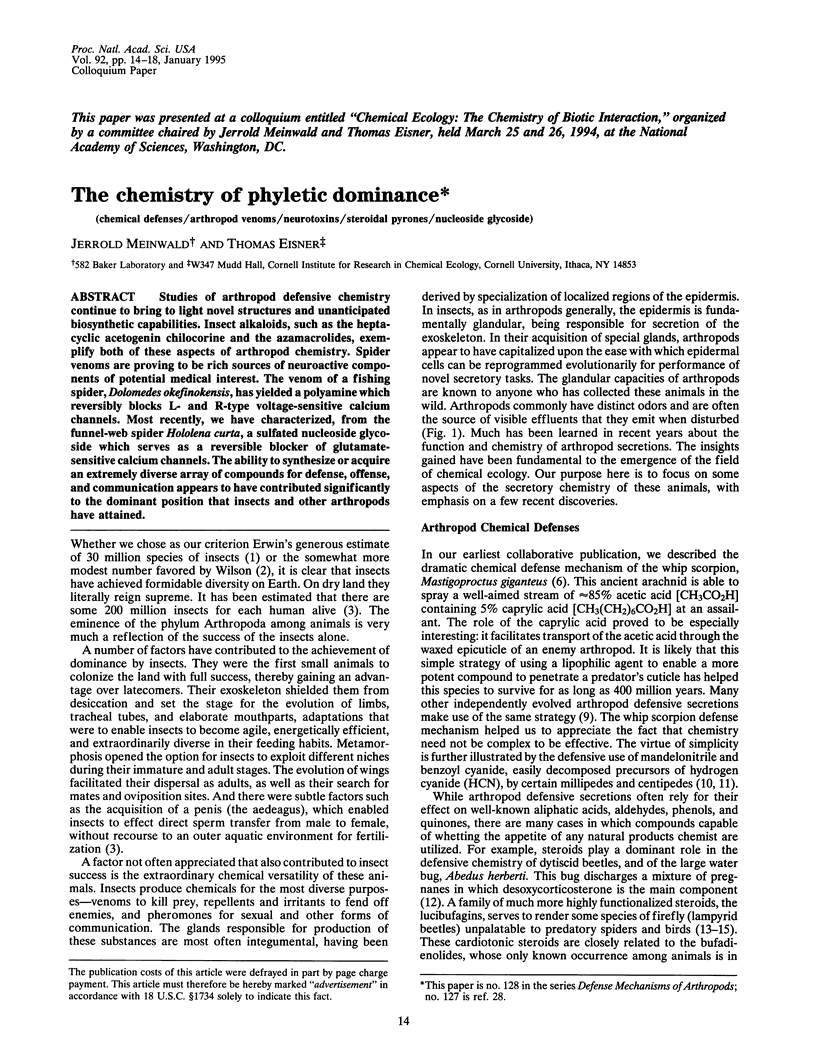
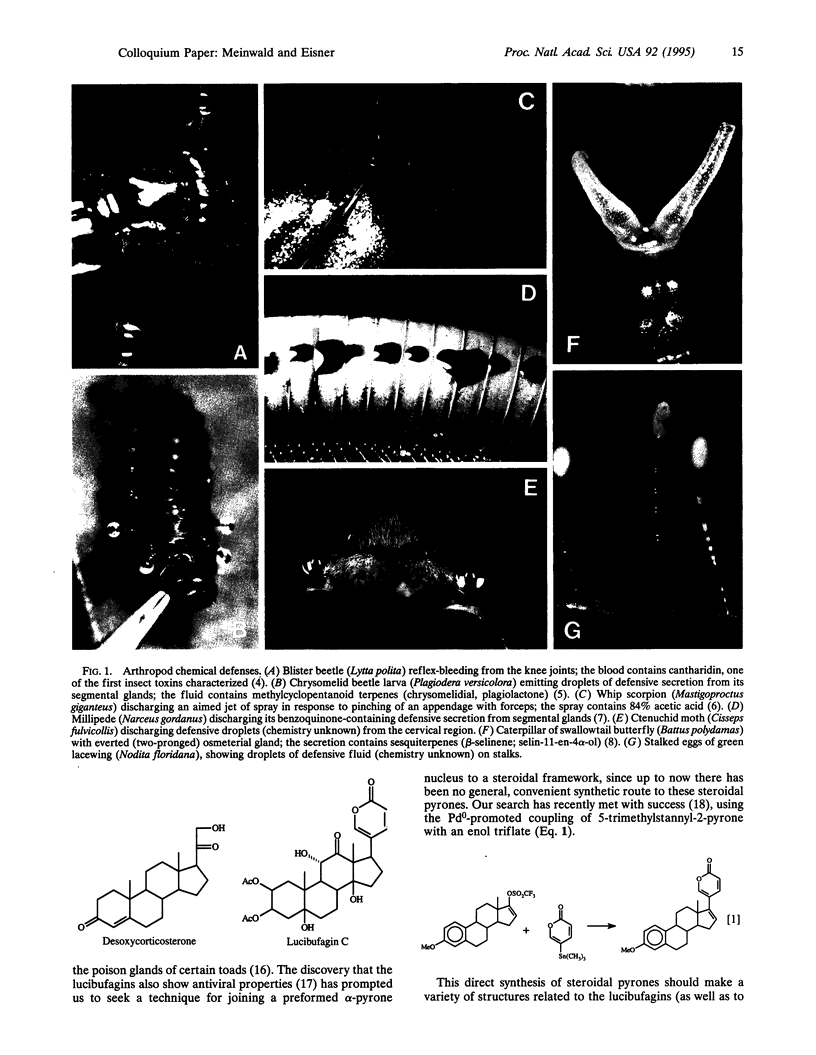
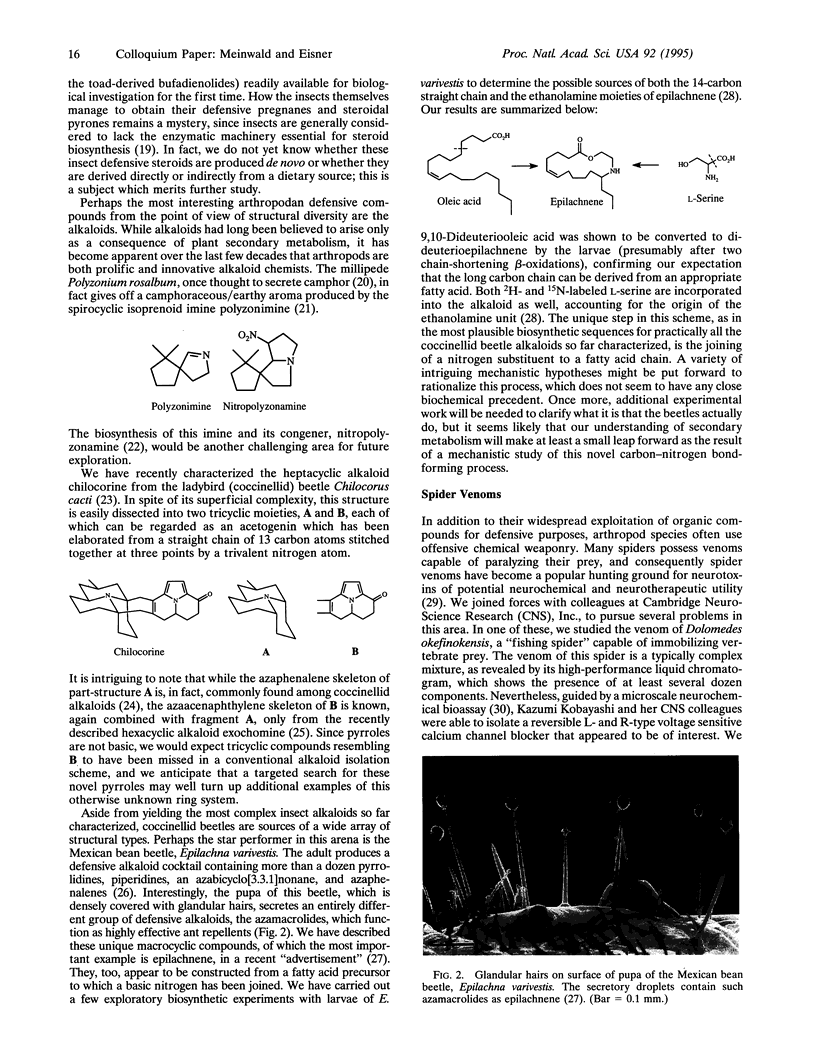
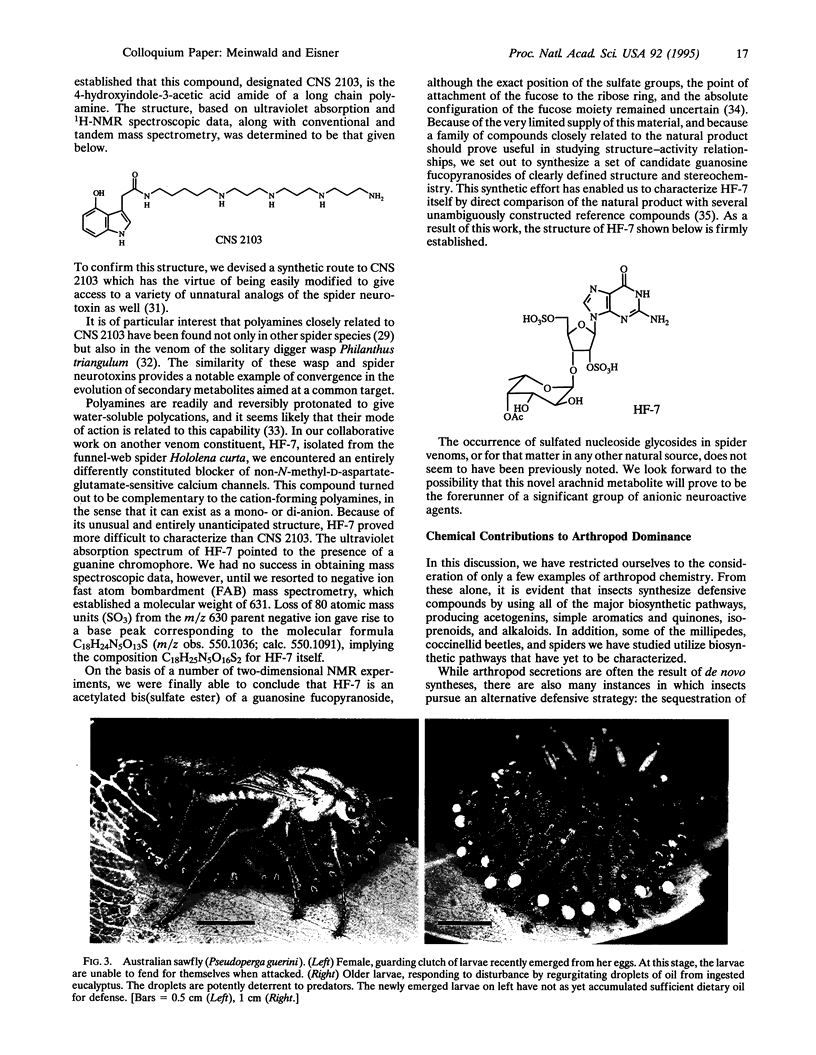
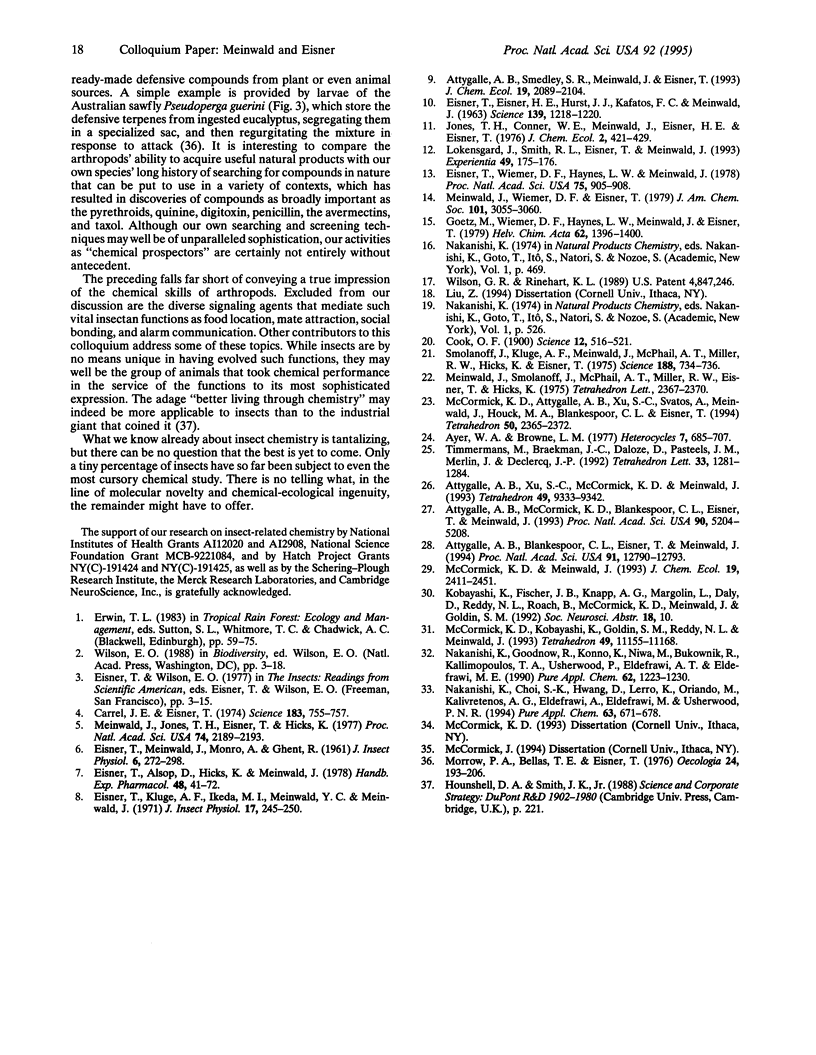
Images in this article
Selected References
These references are in PubMed. This may not be the complete list of references from this article.
- Attygalle A. B., Blankespoor C. L., Eisner T., Meinwald J. Biosynthesis of a defensive insect alkaloid: epilachnene from oleic acid and serine. Proc Natl Acad Sci U S A. 1994 Dec 20;91(26):12790–12793. doi: 10.1073/pnas.91.26.12790. [DOI] [PMC free article] [PubMed] [Google Scholar]
- Attygalle A. B., McCormick K. D., Blankespoor C. L., Eisner T., Meinwald J. Azamacrolides: a family of alkaloids from the pupal defensive secretion of a ladybird beetle (Epilachna varivestis). Proc Natl Acad Sci U S A. 1993 Jun 1;90(11):5204–5208. doi: 10.1073/pnas.90.11.5204. [DOI] [PMC free article] [PubMed] [Google Scholar]
- Carrel J. E., Eisner T. Cantharidin: potent feeding deterrent to insects. Science. 1974 Feb 22;183(4126):755–757. doi: 10.1126/science.183.4126.755. [DOI] [PubMed] [Google Scholar]
- Cook O. F. CAMPHOR SECRETED BY AN ANIMAL (POLYZONIUM). Science. 1900 Oct 5;12(301):516–521. doi: 10.1126/science.12.301.516. [DOI] [PubMed] [Google Scholar]
- Eisner T., Eisner H. E., Hurst J. J., Kafatos F. C., Meinwald J. Cyanogenic Glandular Apparatus of a Millipede. Science. 1963 Mar 22;139(3560):1218–1220. doi: 10.1126/science.139.3560.1218. [DOI] [PubMed] [Google Scholar]
- Eisner T., Wiemer D. F., Haynes L. W., Meinwald J. Lucibufagins: Defensive steroids from the fireflies Photinus ignitus and P. marginellus (Coleoptera: Lampyridae). Proc Natl Acad Sci U S A. 1978 Feb;75(2):905–908. doi: 10.1073/pnas.75.2.905. [DOI] [PMC free article] [PubMed] [Google Scholar]
- Lokensgard J., Smith R. L., Eisner T., Meinwald J. Pregnanes from defensive glands of a belostomatid bug. Experientia. 1993 Feb 15;49(2):175–176. doi: 10.1007/BF01989425. [DOI] [PubMed] [Google Scholar]
- Meinwald J., Jones T. H., Eisner T., Hicks K. New methylcyclopentanoid terpenes from the larval defensive secretion of a chrysomelid beetle (Plagiodera versicolora). Proc Natl Acad Sci U S A. 1977 Jun;74(6):2189–2193. doi: 10.1073/pnas.74.6.2189. [DOI] [PMC free article] [PubMed] [Google Scholar]
- Smolanoff J., Kluge A. F., Meinwald J., McPhail A., Miller R. W., Hicks K., Eisner T. Polyzonimine: A novel terpenoid insect repellent produced by a milliped. Science. 1975 May 16;188(4189):734–736. doi: 10.1126/science.1124395. [DOI] [PubMed] [Google Scholar]





